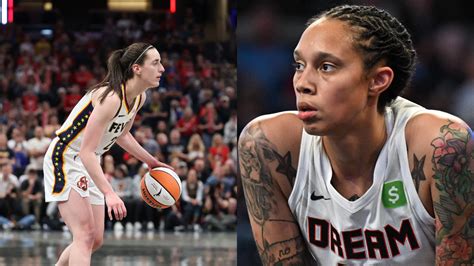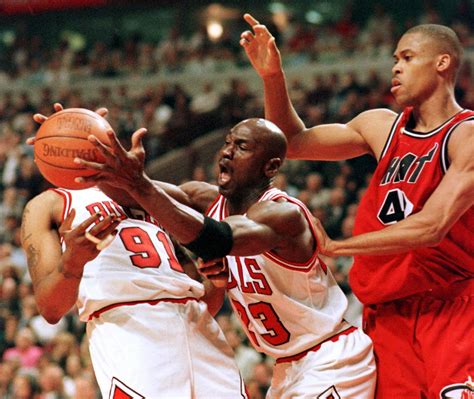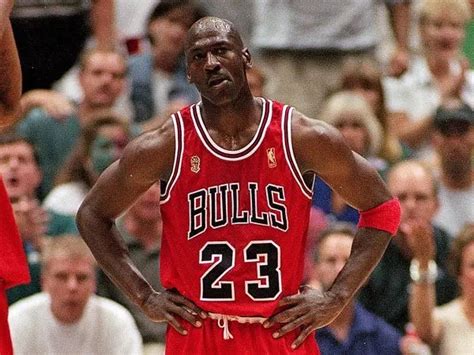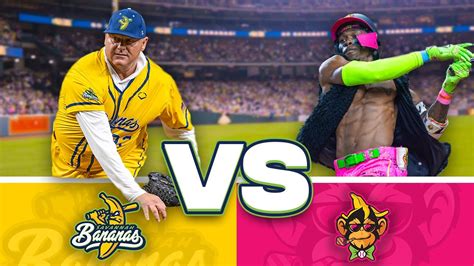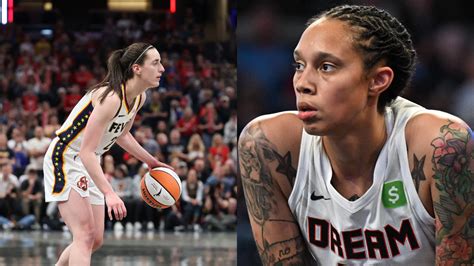
Brittney Griner has publicly refuted allegations that she labeled Caitlin Clark’s popularity as racially motivated, igniting further debate among basketball fans. The controversy stems from comments Griner made during a recent press conference, prompting accusations of racism and sparking a fierce backlash on social media, despite her explicit denial of any racial undertones in her remarks.
Phoenix Mercury center Brittney Griner is facing renewed scrutiny after comments she made about Indiana Fever rookie Caitlin Clark, with accusations surfacing that she attributed Clark’s widespread fame to racial bias. Griner has vehemently denied these claims, stating that her words were misinterpreted and taken out of context. The situation has ignited passionate reactions from fans and commentators alike, further fueling discussions around race, gender, and visibility in women’s basketball.
The controversy began after Griner was asked about the significant media attention surrounding Clark’s entry into the WNBA and its potential impact on the league’s growth. In her response, Griner acknowledged Clark’s talent and marketability but also alluded to underlying factors influencing her popularity. While Griner did not explicitly mention race, some interpreted her comments as suggesting that Clark, who is white, benefits from a privilege not afforded to Black players in the league.
“I think it’s a huge deal. I think now, you see a lot of people may be coming to games, but it’s not just about basketball anymore. I think people are excited about women’s sports. But is it truly growing the game, or are people just seeing what’s different? I don’t know,” Griner stated, according to various reports covering the press conference.
These remarks quickly circulated online, drawing sharp criticism from those who accused Griner of diminishing Clark’s achievements and injecting racial tension into the narrative. The backlash was swift and intense, with social media platforms becoming battlegrounds for heated debates. Many users condemned Griner for allegedly playing the “race card,” while others defended her right to express her views on a complex issue.
In response to the growing controversy, Griner issued a statement clarifying her position. She emphasized that her intention was not to denigrate Clark or suggest that her success was solely attributable to her race. Instead, Griner explained that she wanted to spark a broader conversation about the disparities in media coverage and marketing opportunities within the WNBA, arguing that Black players have historically been overlooked despite their contributions to the league.
“I would never want to diminish another player’s accomplishments or suggest that their success is not deserved,” Griner stated in her clarification. “My intention was to highlight the importance of ensuring that all players, regardless of race or background, have equal opportunities to shine.”
Despite Griner’s attempts to clarify her remarks, the controversy has persisted, with fans remaining divided on the issue. Some continue to accuse Griner of racism, while others argue that her comments were valid observations about the complex dynamics of race and visibility in sports. The situation underscores the sensitivities surrounding discussions of race in the context of athletic achievement and the challenges of navigating these conversations in a public forum.
The WNBA has long grappled with issues of race and representation, with the league’s predominantly Black player base often feeling marginalized in terms of media coverage and marketing opportunities. While the league has made efforts to promote diversity and inclusion, disparities persist, leading to ongoing discussions about how to create a more equitable environment for all players.
The debate surrounding Griner’s comments also highlights the broader issue of “colorism” within the Black community, where lighter-skinned individuals are often perceived as more attractive or marketable. Some have argued that Clark’s lighter complexion may contribute to her broader appeal among certain segments of the population, further exacerbating the existing inequalities in the WNBA.
Furthermore, the controversy has reignited discussions about the intersection of race, gender, and sports, with many pointing out the unique challenges faced by Black female athletes. These athletes often navigate a complex web of stereotypes and biases, which can impact their opportunities and recognition.
The situation involving Griner and Clark serves as a reminder of the ongoing need for open and honest conversations about race and representation in sports. While these discussions can be uncomfortable and divisive, they are essential for creating a more equitable and inclusive environment for all athletes.
The incident also underscores the power of social media to amplify and distort narratives, often leading to misunderstandings and misinterpretations. In the age of instant communication, it is crucial to exercise caution when interpreting and sharing information, especially when it involves sensitive topics such as race and gender.
Brittney Griner’s career has been marked by both athletic achievement and social activism. She has been a vocal advocate for LGBTQ+ rights, criminal justice reform, and other social causes. Her outspokenness has often made her a target of criticism, but she has remained steadfast in her commitment to using her platform to advocate for change.
Caitlin Clark, on the other hand, is a rising star in the WNBA, known for her exceptional shooting ability and on-court leadership. Her arrival in the league has generated unprecedented levels of excitement and attention, with many predicting that she will be a transformative figure for women’s basketball.
The dynamic between Griner and Clark is likely to be closely watched in the coming years, as both players represent different generations and perspectives within the WNBA. Their interactions on and off the court will undoubtedly shape the narrative surrounding the league and its future.
The controversy surrounding Griner’s comments serves as a microcosm of the broader societal debates about race, gender, and representation. It highlights the challenges of navigating these complex issues in a public forum and the importance of fostering understanding and empathy in the face of disagreement.
Moving forward, it is crucial for the WNBA and its stakeholders to continue working towards creating a more equitable and inclusive environment for all players. This includes addressing disparities in media coverage and marketing opportunities, as well as promoting open and honest conversations about race and representation.
Only through sustained efforts can the league ensure that all players, regardless of race or background, have the opportunity to thrive and reach their full potential.
Detailed Analysis and Expanded Context
The incident involving Brittney Griner’s comments about Caitlin Clark is not isolated but part of a larger, ongoing dialogue about race, visibility, and equity within the WNBA and women’s sports generally. To fully understand the nuances of this situation, it’s essential to delve deeper into several key areas: the historical context of race in the WNBA, the role of media and marketing, the impact of social media, and the perspectives of both Griner and Clark within this complex landscape.
Historical Context of Race in the WNBA
The WNBA has always been a predominantly Black league. From its inception in 1997, African American players have constituted a significant majority of the roster. This demographic reality, however, has not always translated into equitable representation in terms of media coverage, endorsements, and overall visibility.
Historically, white players, particularly those perceived as conventionally attractive and fitting into mainstream beauty standards, have often received disproportionate attention from the media and marketing agencies. This phenomenon is not unique to the WNBA; it reflects broader societal biases and preferences that have historically marginalized Black athletes in various sports.
Several factors contribute to this disparity. One is the pervasive “marketability” narrative, which often favors white athletes who are deemed more palatable to a wider audience, particularly corporate sponsors. This narrative often overlooks the accomplishments and contributions of Black players, perpetuating a cycle of underrepresentation and limited opportunities.
Another factor is the historical lack of investment in women’s sports generally. For years, women’s basketball, including the WNBA, struggled to gain mainstream recognition and financial support. This lack of investment has disproportionately affected Black players, who have often been denied the resources and platforms necessary to showcase their talents and build their brands.
In recent years, the WNBA has made strides in addressing these inequalities. The league has implemented various initiatives to promote diversity and inclusion, including programs aimed at increasing media coverage of Black players and providing them with marketing and endorsement opportunities. However, significant challenges remain, and the controversy surrounding Griner’s comments highlights the ongoing need for systemic change.
The Role of Media and Marketing
The media plays a crucial role in shaping public perceptions of athletes and influencing their marketability. Media coverage can significantly impact an athlete’s visibility, endorsement opportunities, and overall success.
Historically, the WNBA has struggled to attract consistent media attention, particularly compared to its male counterpart, the NBA. This lack of coverage has disproportionately affected Black players, who have often been overlooked in favor of white players who are perceived as more marketable.
Several factors contribute to this disparity in media coverage. One is the prevailing narrative that women’s sports are less exciting or less important than men’s sports. This narrative often leads to underinvestment in women’s sports by media outlets, resulting in fewer televised games, less in-depth coverage, and lower overall visibility.
Another factor is the historical lack of diversity within the sports media industry. For years, the vast majority of sports journalists and commentators have been white men, who may not always be aware of or sensitive to the experiences of Black athletes. This lack of diversity can lead to biased coverage that reinforces existing stereotypes and marginalizes Black players.
In recent years, there has been a growing movement to increase diversity and inclusion within the sports media industry. Organizations like the Association for Women in Sports Media (AWSM) and the National Association of Black Journalists (NABJ) have been working to promote the representation of women and people of color in sports journalism. However, significant progress still needs to be made.
Marketing also plays a crucial role in shaping public perceptions of athletes and influencing their marketability. Marketing agencies often prioritize white athletes who are perceived as more palatable to a wider audience, particularly corporate sponsors. This can lead to disparities in endorsement opportunities and overall financial success for Black players.
Several factors contribute to this bias in marketing. One is the perception that white athletes are more relatable to mainstream consumers. This perception is often based on stereotypes and biases that reinforce existing inequalities.
Another factor is the historical lack of investment in Black-owned marketing agencies. These agencies often lack the resources and connections necessary to compete with larger, predominantly white firms. This can limit the opportunities for Black athletes to secure endorsements and build their brands.
The Impact of Social Media
Social media has become an increasingly powerful tool for athletes to connect with fans, build their brands, and advocate for social causes. However, social media can also be a source of controversy and negativity, particularly when it comes to issues of race and gender.
The controversy surrounding Griner’s comments highlights the power of social media to amplify and distort narratives. Griner’s remarks were quickly circulated online, drawing sharp criticism from those who accused her of racism. The backlash was swift and intense, with social media platforms becoming battlegrounds for heated debates.
One of the challenges of social media is that it can be difficult to control the narrative. Once a comment or post goes viral, it can be easily misinterpreted or taken out of context. This can lead to misunderstandings and misrepresentations, particularly when it comes to sensitive topics such as race and gender.
Another challenge of social media is that it can be a breeding ground for negativity and harassment. Athletes who speak out on social issues often face a barrage of criticism and abuse, which can take a toll on their mental health and well-being.
Despite these challenges, social media can also be a powerful tool for athletes to promote positive change. Athletes can use social media to connect with fans, build their brands, and advocate for social causes. They can also use social media to challenge stereotypes and biases and promote diversity and inclusion.
The Perspectives of Griner and Clark
To fully understand the controversy surrounding Griner’s comments, it’s essential to consider the perspectives of both Griner and Clark.
Griner is a veteran player who has been a vocal advocate for LGBTQ+ rights, criminal justice reform, and other social causes. She has often used her platform to speak out against injustice and inequality.
Griner’s comments about Clark should be viewed in the context of her long-standing commitment to social justice. She has consistently advocated for greater equity and inclusion in the WNBA and beyond.
Clark, on the other hand, is a rising star who is just beginning her WNBA career. She is known for her exceptional shooting ability and on-court leadership.
Clark has not publicly responded to Griner’s comments. However, she has expressed a commitment to using her platform to promote women’s basketball and inspire young girls.
The dynamic between Griner and Clark is likely to be closely watched in the coming years. Both players represent different generations and perspectives within the WNBA. Their interactions on and off the court will undoubtedly shape the narrative surrounding the league and its future.
Moving Forward
The controversy surrounding Griner’s comments serves as a reminder of the ongoing need for open and honest conversations about race, gender, and representation in sports. While these discussions can be uncomfortable and divisive, they are essential for creating a more equitable and inclusive environment for all athletes.
Moving forward, it is crucial for the WNBA and its stakeholders to continue working towards creating a more equitable and inclusive environment for all players. This includes addressing disparities in media coverage and marketing opportunities, as well as promoting open and honest conversations about race and representation.
Only through sustained efforts can the league ensure that all players, regardless of race or background, have the opportunity to thrive and reach their full potential. This requires a multi-faceted approach, including:
-
Increased Investment in Black Players: The WNBA and its marketing partners should prioritize investing in Black players by providing them with more endorsement opportunities, media exposure, and resources to build their brands.
-
Diversity in Media and Marketing: The sports media industry and marketing agencies should prioritize hiring and promoting diverse talent to ensure that the perspectives of Black athletes are represented and valued.
-
Education and Awareness: The WNBA should provide education and awareness programs for players, coaches, and staff to promote understanding and empathy around issues of race, gender, and representation.
-
Open Dialogue: The WNBA should encourage open and honest dialogue about race and representation among players, coaches, and staff. This can help to build trust and understanding and create a more inclusive environment.
-
Accountability: The WNBA should hold itself and its stakeholders accountable for promoting diversity and inclusion. This includes setting measurable goals and tracking progress over time.
By taking these steps, the WNBA can create a more equitable and inclusive environment for all players and ensure that everyone has the opportunity to thrive.
Frequently Asked Questions (FAQ)
1. What exactly did Brittney Griner say that sparked the controversy?
Brittney Griner’s comments alluded to the factors influencing Caitlin Clark’s popularity, suggesting that while Clark is talented, her race might play a role in the attention she receives. While she didn’t explicitly mention race, some interpreted her statements as implying that Clark, who is white, benefits from a privilege not afforded to Black players.
2. How did Brittney Griner respond to the accusations of racism?
Griner vehemently denied labeling Clark’s popularity as racially motivated. She clarified that her intention was to highlight the disparities in media coverage and marketing opportunities within the WNBA, where Black players have historically been overlooked despite their significant contributions to the league.
3. What is the WNBA doing to address issues of race and representation within the league?
The WNBA has implemented various initiatives to promote diversity and inclusion, including programs aimed at increasing media coverage of Black players and providing them with marketing and endorsement opportunities. The league acknowledges the historical disparities and is actively working to create a more equitable environment.
4. How has social media influenced the Brittney Griner/Caitlin Clark situation?
Social media amplified the controversy, leading to widespread debate and misinterpretations of Griner’s comments. The backlash was intense, with accusations of racism leveled against Griner and passionate defenses of her right to express her views on the complex dynamics of race in sports.
5. What broader implications does this controversy have for women’s sports and discussions about race?
This controversy highlights the ongoing need for open and honest conversations about race, gender, and representation in sports. It underscores the challenges of navigating these complex issues in a public forum and the importance of fostering understanding and empathy in the face of disagreement. It also raises questions about media bias and how the league markets its players.






